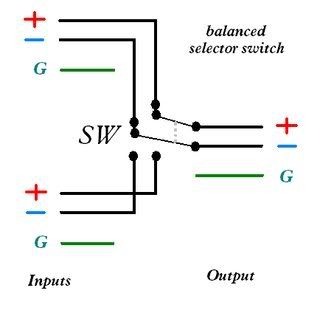This is a super easy question.....
I have one balanced input on my DAW monitor preamp.
I want to build a small (mechanical) "selector switch box" to swap between multiple inputs, and I don't want any "pop" when switching.
Make-before-break ?
Is "ground" (shield) included in the switching action ?
pic with the shield left unanswered...

=FB=
I have one balanced input on my DAW monitor preamp.
I want to build a small (mechanical) "selector switch box" to swap between multiple inputs, and I don't want any "pop" when switching.
Make-before-break ?
Is "ground" (shield) included in the switching action ?
pic with the shield left unanswered...

=FB=

































